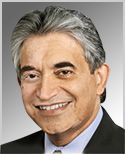Article
Leadership tips for your urology unit during the COVID crisis
Author(s):
"We take online training for simulation of chemical spill, radiation, and infection, but there is no manual to follow in this burgeoning COVID-19 crisis," writes Gopal H. Badlani, MD.

Dr. Badlani, a Urology Times editorial consultant, is professor of urology, Wake Forest Baptist Medical Center, Winston-Salem, NC.
Many institutions and large practice units create manuals or standard operating procedure for response during a variety of crisis situations. We take online training for simulation of chemical spill, radiation, and infection, but there is no manual to follow in this burgeoning COVID-19 crisis. The rules of the “game” have changed day by day, sometimes within hours. The email traffic with a variety of instructions is so heavy that it is difficult to keep your thoughts steady.
There is one aspect of caring for yourself and another directing traffic for those under your leadership. The situation is different whether you’re in an academic center, federal site, or large private practice group setting, as opposed to a smaller practice where all decisions are made by you.
In an academic institution, a command structure is developing the policy, whereas in the federal (VA) system, it is being directed nationally. Since I work at both places and lead at the VA in the same region, the experience is somewhat similar but not exactly the same.
Surgical procedures. We all prepare how to deal with a large number of cases coming through our trauma unit or a natural disaster, and the ER being overwhelmed. No one prepared for how “not to do” surgery. The decision had to be taken away from individual surgeons after the initial request to cut down elective cases. It took time to learn, the goal was to preserve or save personal protective equipment, and the OR could be a conduit for spreading the virus through asymptomatic carriers.
The traffic and personnel involved in doing a single case can be substantial. Weighing patient harm by waiting versus immediate surgery, as wait times are unknown, created a heated debate for some. At the VA it was more a leadership decision, as the unit chief has the ability to make that decision.
Clinic or outpatient care. That most visits can be managed with telemedicine is the new reward from this crisis. As we get more accustomed to the process, I can see the patients and physicians both adapting to this new norm. The revenue/reimbursement is not being questioned during the crisis, but time and effort will need to be addressed if this becomes the new norm. The role of ancillary staff has been critical in the process and not recognized easily. Shifting the appointment to a televisit, initiating the visit, updating all the requirements of a visit and setting up follow-up after an electronic visit are all key tasks that are the pillars to the success of this visit.
Caring for the staff and self. In caring for patients, we often forget the safety of staff and self. Thus, reducing traffic coming into the clinic has become as important as traffic entering the hospital. Depending on the location (near or in a senior center) or the type of patient population could require complete shutdown of the location and moving the clinic to a temporary location where multiple surgical units could be served by a rotating the ancillary staff and providers, so as to manage staff illness if it were to happen.
Staff and physicians over 65 should be isolated as much as possible. Although residents and fellows are young, they need the same concern and protection, once again by creating rotating teams and keeping the rest available at home.
Communication. Although email notifications are generic and multifold, creating a text group for leadership for quick notification became important as remote access in the VA system can be patchy. Scheduled calls each week at a set time for weekly updates and concerns is the second approach. Use of Zoom or another video-based platform for faculty meeting/education lectures at the university setting has been very successful.
Programs across the country are seeking teaching rounds that can be shared. A live presentation across the world was done successfully in a scheduled meeting in India at the cusp of travel restriction. It will be the wave of the future.
In the end, leadership is all about elevating and protecting those around you. Their success and well-being is a measure of achievement. Perspective is a view from afar and the wider angle is needed to reassess oneself; otherwise we remain zoomed in on the narrow focus of today, which passes before you know it.
















